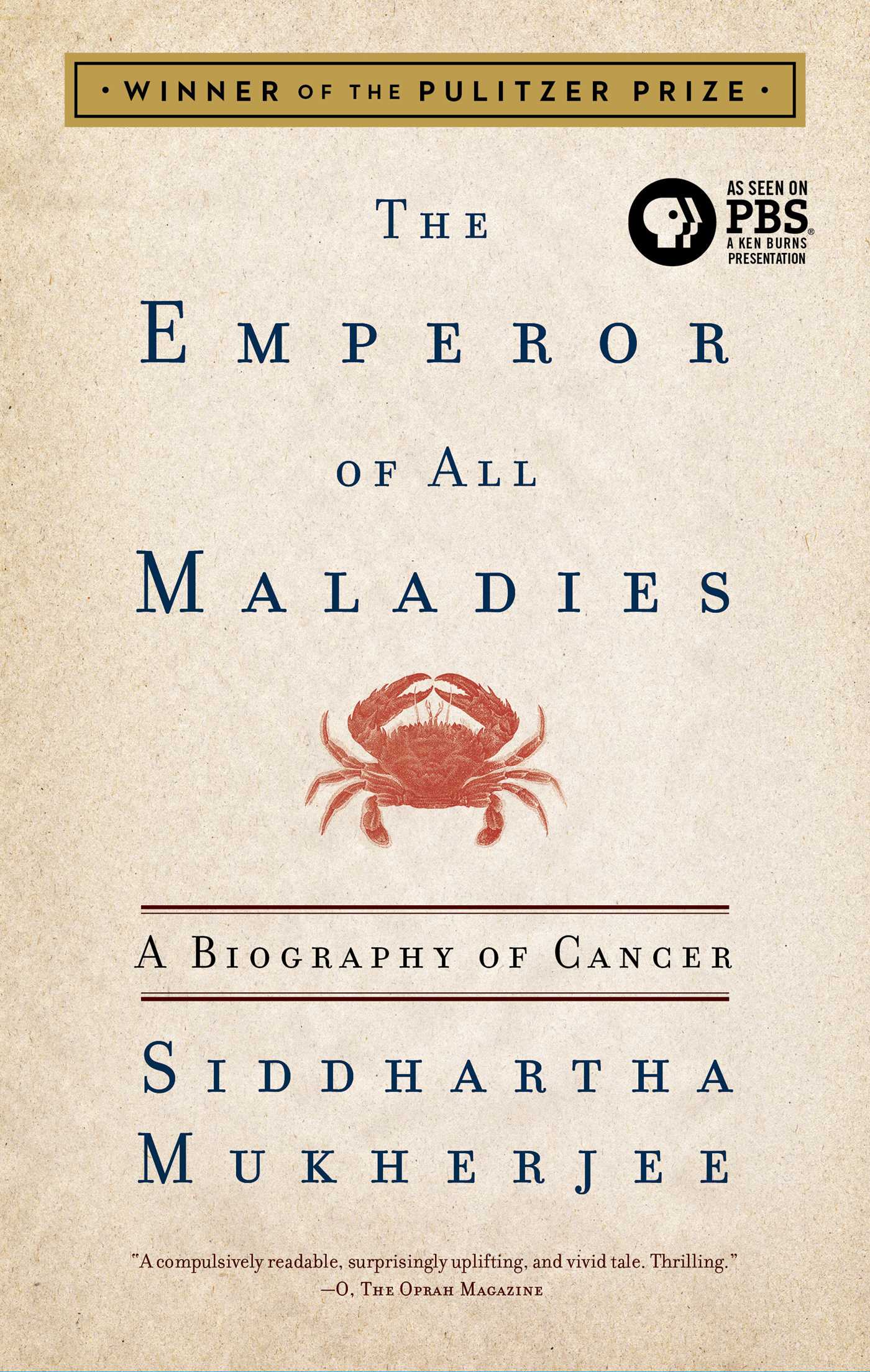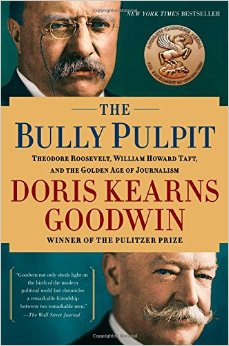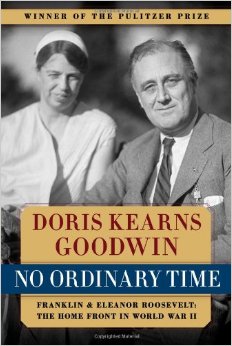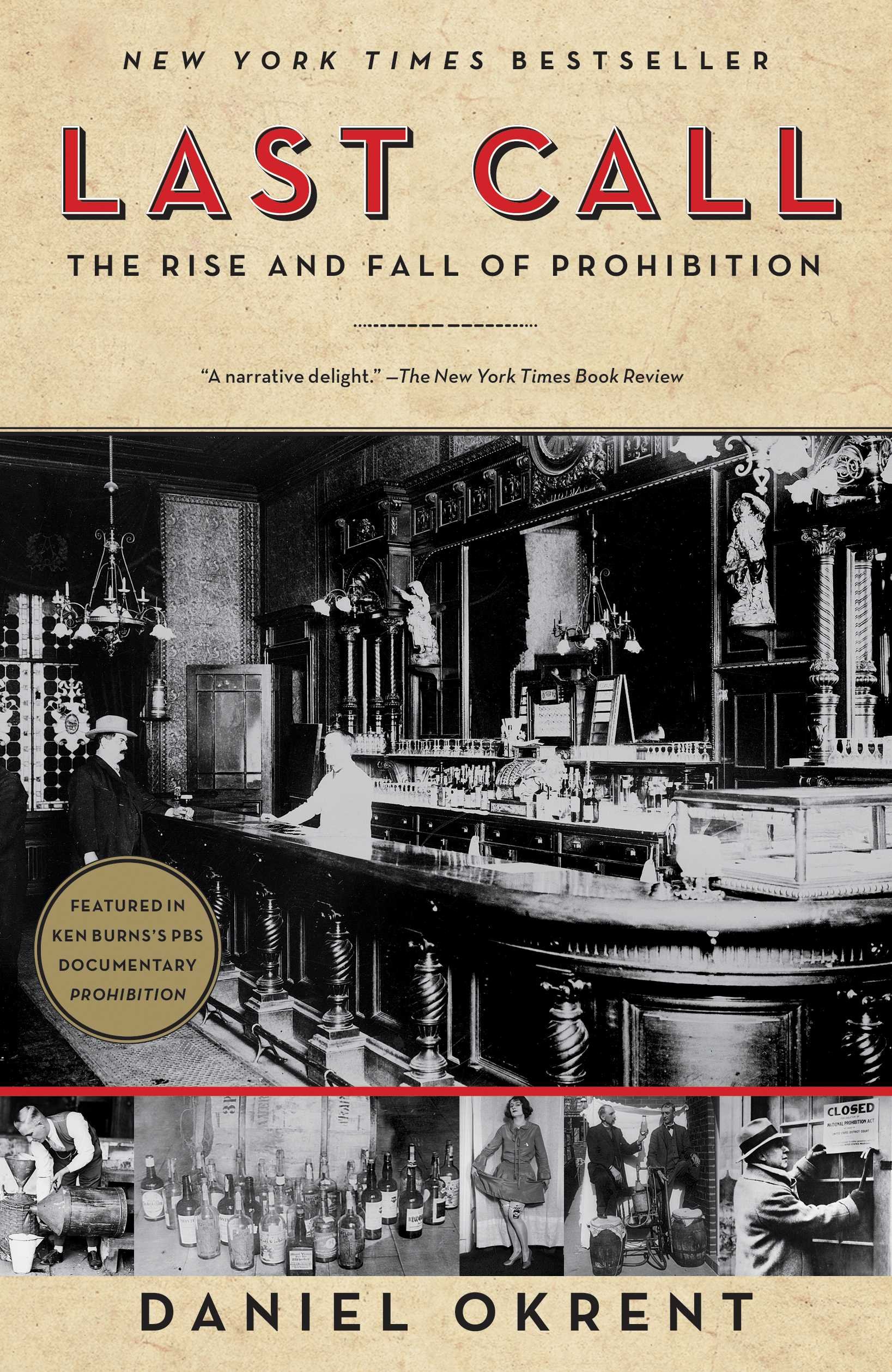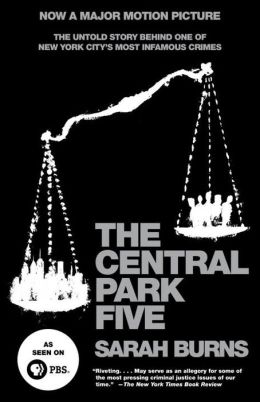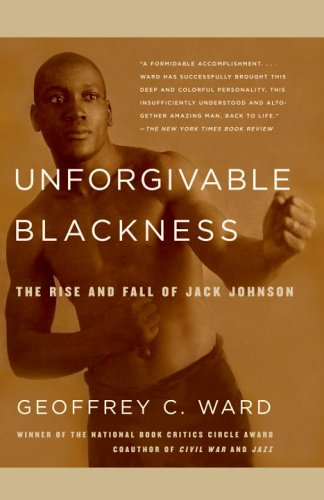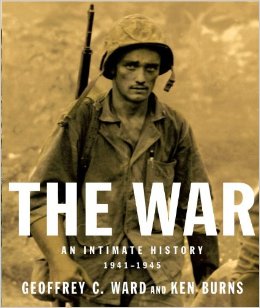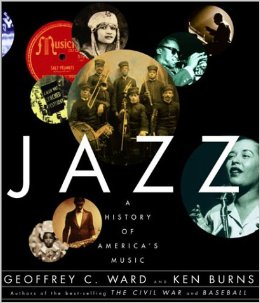Ken Burns’s latest documentary, Cancer: The Emperor of All Maladies, is currently airing on PBS. Known for his sweeping documentaries, this master of the form has been bringing American history to life for the last thirty-five years. Burns has achieved a level of cult status reserved for few filmmakers (Apple’s iMovie even has a function called “The Ken Burns Effect”), and many of his great documentaries are born from great books. Ranging from source material to companion volumes to brilliant narratives on the same topic, these are the books behind the documentaries.
Ken Burns: The Books Behind the Documentaries
The winner of the Pulitzer Prize and the most recent recipient of the Ken Burns documentary treatment, THE EMPEROR OF ALL MALADIES is a magnificent, profoundly humane biography of cancer—from its first documented appearances thousands of years ago through the epic battles in the twentieth century to cure, control, and conquer the disease, to a radical new understanding of its essence.
For fans of “Radiolab”
Radiolab is an in-depth podcast about curiosity that breaks down topics as diverse as end-of-life care, collegiate debating, snapping shrimp, and ice-skating controversies—and leaves you with newfound knowledge and an eagerness to learn more. Siddhartha Mukherjee’s bestselling, Pulitzer Prize–winning THE EMPEROR OF ALL MALADIES has that same effect. This incredibly readable and epic “biography” of cancer illuminates and dissects the disease like never before.
Beginning with the birth of Theodore in 1858 and ending with the death of Eleanor in 1962, the documentary The Roosevelts: An Intimate History covers more than 100 years of American history and draws on two of Doris Kearns Goodwin’s masterful books. Told through the friendship of Theodore Roosevelt and William Howard Taft, The Bully Pulpit is the story of the Progressive Era’s muckraking press, which helped Roosevelt crack down on the era’s robber barons, corrupt politicians, and corporate exploiters.
Beginning with the birth of Theodore in 1858 and ending with the death of Eleanor in 1962, the documentary The Roosevelts: An Intimate History covers more than 100 years of American history and draws on two of Doris Kearns Goodwin’s masterful books. Told through the friendship of Theodore Roosevelt and William Howard Taft, The Bully Pulpit is the story of the Progressive Era’s muckraking press, which helped Roosevelt crack down on the era’s robber barons, corrupt politicians, and corporate exploiters.
Winner of the Pulitzer Prize for History, No Ordinary Time weaves together a number of story lines—Eleanor and Franklin’s marriage and remarkable partnership, Eleanor’s life as First Lady, and FDR’s White House and its impact on America as well as on a world at war. Goodwin effectively melds these details and stories into an intimate portrait of Eleanor and Franklin and of the time during which a new, modern America was born.
Winner of the Pulitzer Prize for History, No Ordinary Time weaves together a number of story lines—Eleanor and Franklin’s marriage and remarkable partnership, Eleanor’s life as First Lady, and FDR’s White House and its impact on America as well as on a world at war. Goodwin effectively melds these details and stories into an intimate portrait of Eleanor and Franklin and of the time during which a new, modern America was born.
2011’s Prohibition drew heavily from Daniel Okrent’s fascinating narrative history of this puzzling and exciting era—the years from 1920 to 1933—when the U.S. Constitution was amended to outlaw one of America’s favorite pastimes: the consumption of alcohol. Peopled with vivid characters and filled with stories from across the country, Last Call reveals this strange chapter in American history as never before.
2011’s Prohibition drew heavily from Daniel Okrent’s fascinating narrative history of this puzzling and exciting era—the years from 1920 to 1933—when the U.S. Constitution was amended to outlaw one of America’s favorite pastimes: the consumption of alcohol. Peopled with vivid characters and filled with stories from across the country, Last Call reveals this strange chapter in American history as never before.
MENTIONED IN:
The Brooklyn Bridge is a staggering feat of architecture and a symbol of achievement in the face of adversity. McCullough’s dignified prose illuminates the sweeping drama surrounding the creation of the only stone-towered, steel-cabled bridge on earth.
The Brooklyn Bridge is a staggering feat of architecture and a symbol of achievement in the face of adversity. McCullough’s dignified prose illuminates the sweeping drama surrounding the creation of the only stone-towered, steel-cabled bridge on earth.
Sarah Burns, Ken’s daughter, continues the family tradition with this fascinating companion book. Reexamining one of New York City’s most notorious crimes and its tragic aftermath, this powerful account unravels the forces that made both the crime and its prosecution possible, and gives us a portrait of a city beset by violence and deepening rifts between races and classes.
Sarah Burns, Ken’s daughter, continues the family tradition with this fascinating companion book. Reexamining one of New York City’s most notorious crimes and its tragic aftermath, this powerful account unravels the forces that made both the crime and its prosecution possible, and gives us a portrait of a city beset by violence and deepening rifts between races and classes.
Ken Burns’s The Dust Bowl (2012) and Timothy Egan’s The Worst Hard Time tell the stories of the Americans who survived the dust storms that terrorized the Great Plains during the darkest years of the Depression. Egan, a Pulitzer Prize–winning journalist, captures the gritty voice of the times as he follows six families as they went from new framed houses to huddling in basements with the windows sealed by damp sheets in a futile effort to keep the dust out.
Ken Burns’s The Dust Bowl (2012) and Timothy Egan’s The Worst Hard Time tell the stories of the Americans who survived the dust storms that terrorized the Great Plains during the darkest years of the Depression. Egan, a Pulitzer Prize–winning journalist, captures the gritty voice of the times as he follows six families as they went from new framed houses to huddling in basements with the windows sealed by damp sheets in a futile effort to keep the dust out.
MENTIONED IN:
Burns’s searing 2004 documentary of racism and social inequality in the Jim Crow era was accompanied by this book from prizewinning biographer Geoffrey C. Ward. Jack Johnson was the most celebrated—and the most reviled—African American of his age. After he battled his way from obscurity to the top of the world’s heavyweight ranks, he was seen as a perpetual threat—profligate, arrogant, amoral, a dark menace, and a danger to the natural order of things.
Burns’s searing 2004 documentary of racism and social inequality in the Jim Crow era was accompanied by this book from prizewinning biographer Geoffrey C. Ward. Jack Johnson was the most celebrated—and the most reviled—African American of his age. After he battled his way from obscurity to the top of the world’s heavyweight ranks, he was seen as a perpetual threat—profligate, arrogant, amoral, a dark menace, and a danger to the natural order of things.
MENTIONED IN:
The vivid voices of ordinary men and women who experienced—and helped to win—the Second World War, the most devastating war in history, speak from these pages. Focusing on the citizens of four American towns, The War follows prisoners of war and Japanese American internees, defense workers and schoolchildren, and families who struggled simply to stay together while their men were shipped off to Europe, the Pacific, and North Africa.
The vivid voices of ordinary men and women who experienced—and helped to win—the Second World War, the most devastating war in history, speak from these pages. Focusing on the citizens of four American towns, The War follows prisoners of war and Japanese American internees, defense workers and schoolchildren, and families who struggled simply to stay together while their men were shipped off to Europe, the Pacific, and North Africa.
MENTIONED IN:
The companion volume to the ten-part miniseries that aired in 2000, Geoffrey C. Ward and Ken Burns bring to life the story of the quintessential American music—jazz. Born in the black community of turn-of-the-century New Orleans but played from the beginning by musicians of every color, jazz celebrates all Americans at their best.
The companion volume to the ten-part miniseries that aired in 2000, Geoffrey C. Ward and Ken Burns bring to life the story of the quintessential American music—jazz. Born in the black community of turn-of-the-century New Orleans but played from the beginning by musicians of every color, jazz celebrates all Americans at their best.
MENTIONED IN:
Elizabeth Cady Stanton and Susan B. Anthony led the public battle to secure for women the most basic civil rights and helped establish a movement that would revolutionize American society. Filled with a wonderful array of illustrations, Not for Ourselves Alone is an inspiring portrait of two of the most fascinating—and important—characters in American history.
Elizabeth Cady Stanton and Susan B. Anthony led the public battle to secure for women the most basic civil rights and helped establish a movement that would revolutionize American society. Filled with a wonderful array of illustrations, Not for Ourselves Alone is an inspiring portrait of two of the most fascinating—and important—characters in American history.
MENTIONED IN:

